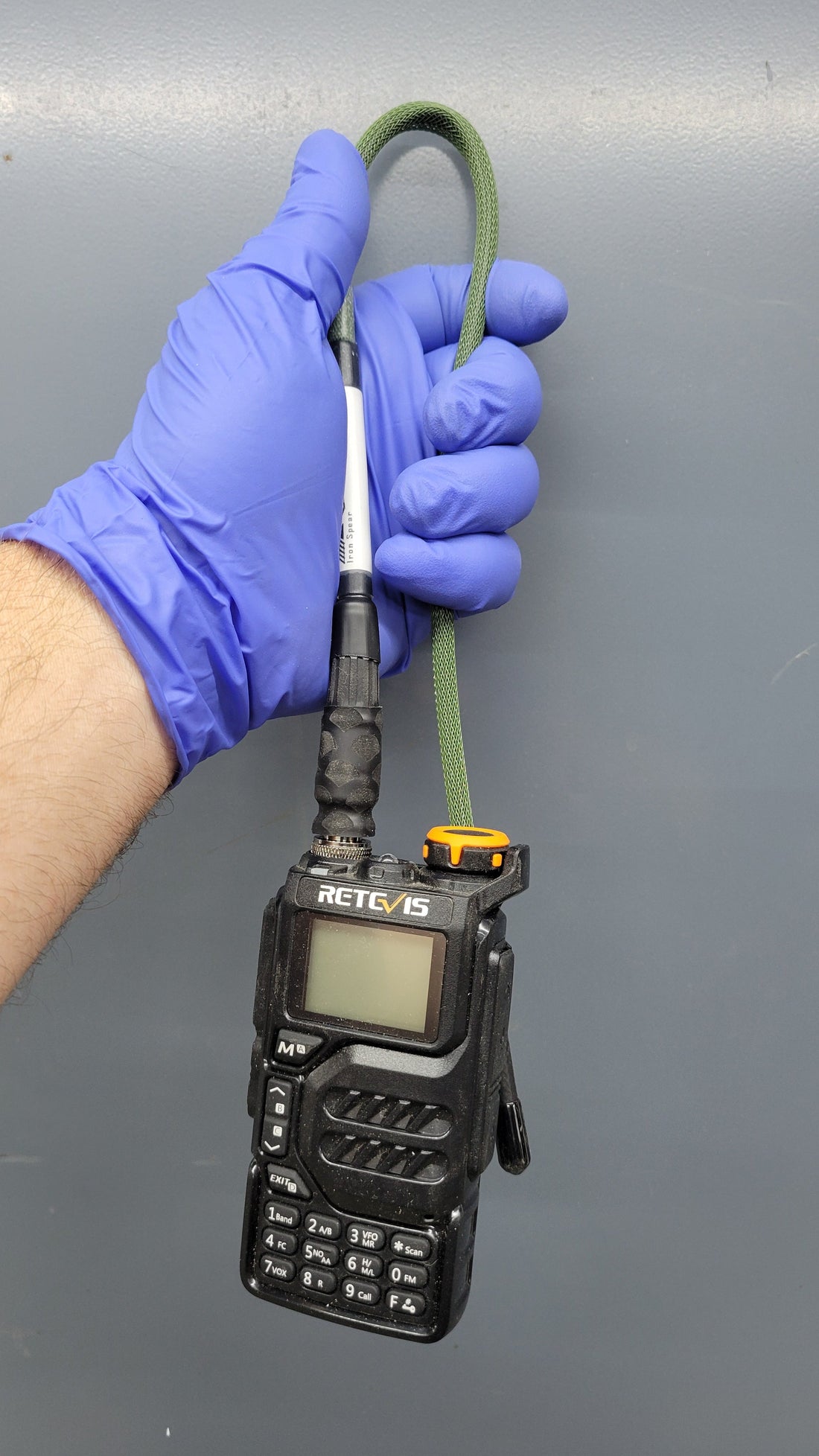
The 2-4dB Upgrade: Why Your Stock Antenna Fails
Share
The Indestructible Antenna: Performance That Lasts
Every ham radio operator knows the truth: the stock "rubber ducky" antenna that comes with your handheld transceiver (HT) is a compromise. It’s small, it’s flexible, but its performance is mediocre at best. You can buy a better antenna, or you can seek out something truly special.
But what if an antenna wasn't just better, but was also nearly indestructible? An antenna that you can cram into a backpack, scrape against rocks, and still have it stand perfectly straight, ready to perform when you need it most.
This is the story of such an antenna—a high-performance 2m/70cm dual-band whip that prioritizes real-world durability over laboratory perfection.
The Core Philosophy: A Material Built for the Real World
In RF engineering, the choice of material is everything. Here's how common options stack up:
- Copper: The king of conductivity. In a perfect world, all antennas would be made of copper. However, it's extremely soft and bends if you look at it wrong. A bent antenna is a broken antenna.
- Stainless Steel: A good compromise. It's much stronger than copper and still a decent conductor. Most aftermarket whip antennas use steel for this reason, but it can still be permanently bent with rough use.
- Nickel Titanium (Nitinol): This is where we break from tradition. Nitinol is a "memory metal" that is incredibly resilient. It has higher electrical resistance than copper or steel (which means a small, predictable amount of signal loss), but it is virtually indestructible. It will always return to its perfectly straight shape.
Our theory was simple: An always-straight Nickel Titanium antenna with a minor, predictable signal loss is infinitely better than a "perfect" copper or steel antenna that's easily compromised.
When an antenna is no longer vertical, its performance plummets due to high SWR and polarization mismatch—a loss that can easily be -20 dB or more. Our choice to use Nickel Titanium eliminates that risk.
From Concept to Reality
Guided by this philosophy, we developed an antenna that simply refuses to stay bent. Each antenna is meticulously constructed for maximum durability and individually tuned using professional-grade equipment. We ensure a near-perfect SWR match, allowing your radio to perform at its full potential.
The Verdict: How Does It Stack Up?
So, how does an indestructible antenna built for the real world perform against a stock rubber ducky? The key to its dual-band performance lies in its electrical length. On the 2-meter band, it acts as a highly efficient full-size quarter-wave (1/4λ) antenna. On the 70cm band, that same physical length functions as a three-quarter-wave (3/4λ) antenna, which provides an even lower angle of radiation and additional gain.
Now, let's look at the numbers.
A stock rubber ducky is an electrically short, loaded antenna with a typical gain of around -3.5 dBi. (Yes, that's a negative number—it performs worse than a theoretical ideal antenna).
A full-size, quarter-wave whip like ours has a theoretical gain of about +2.0 dBi on the 2m band. After accounting for the trade-offs made for durability by using Nickel Titanium, our antenna's net gain is approximately +0.5 dBi.
Now, let's compare that to the stock antenna:
- Total Improvement: (+0.5 dBi) - (-3.5 dBi) = 4.0 dB Gain
A 4 dB gain over a stock antenna is a massive improvement. It’s the equivalent of more than doubling your effective radiated power. That's the difference between being heard clearly and being lost in the noise.
For your radio, don't just settle for what's theoretically "best" in a lab. Choose what's best for the real world. Choose an indestructible antenna that delivers consistent, reliable performance every single time.
```